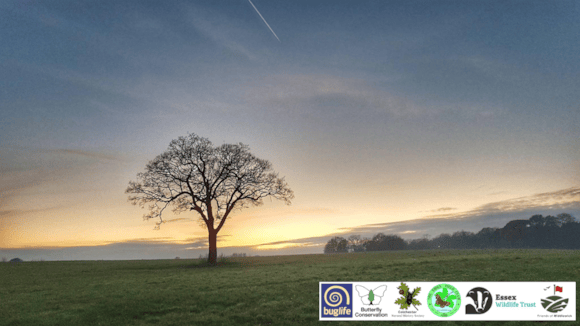Local community and wildlife organisations have come together to call for one of Essex’s best loved wildlife sites to be protected. Today the six organisations presented ‘Middlewick Ranges: the case for Site of Special Scientific Interest designation’ to the Government’s environmental advisor Natural England – urging it to take urgent steps to secure the site’s future.
Sitting on the southern edge of Colchester, the Middlewick Ranges is a former Ministry of Defence (MOD) firing range but has become a much-loved community wildlife space in an increasingly congested city. With habitats lost across the landscape, Middlewick now supports over 10% of the county’s rare remaining acid grassland. Its expansive mosaic of flowery grassland, sandy slopes, lichen heath, scrub, ponds and hedgerows has made it home to a rich diversity of animals.
Middlewick Ranges is a core component of a national network of sites for Red Listed Nightingales (Luscinia megarhynchos) – these rare birds form part of an assemblage of over 20 Red and Amber Listed breeding birds on the site. It is home to nearly 1,500 invertebrates, including 167 species of conservation concern. Incredibly, a quarter of all the UK’s spider species have been recorded here, including the Vulnerable Six-spotted Mouse-spider (Phaeocedus braccatus). It is also home to a quarter of all of Essex’s recorded butterflies and moths. Threatened species have found a refuge here, such as the striking Endangered Necklace Ground Beetle (Carabus monilis) and the Four-banded Weevil-wasp (Cerceris quadricincta), a wasp only found in Essex and Kent. It also supports thriving populations of reptiles, amphibians, mammals and specialist waxcap fungi.
Buglife, Butterfly Conservation, Colchester Natural History Society, Essex Field Club, Essex Wildlife Trust and the community led Friends of Middlewick say that the 76 hectare Local Wildlife Site clearly meets the strict criteria used to identify Sites of Special Scientific Interest (SSSI) – our most important places for wildlife. Furthermore, the need for this high level of protection is growing due to the looming threat of a housing development that would see its wildlife decimated. The MOD currently have Middlewick Ranges on sale for development – a decision that the community and wildlife organisations have called on them to reverse.
Martin Pugh, Deputy Chair of the Friends of Middlewick Ranges says, “Middlewick Ranges Local Wildlife Site is treasured locally but is of national importance. Those well-trodden sandy slopes and acid grassland are now a curiosity in Essex which has lost so much of this irreplaceable habitat. Home to a premier UK Nightingale population, European protected Barbastelle Bats and a myriad of wildlife, including notable and rare invertebrates, biodiverse gems like Middlewick simply must be retained, protected and enhanced. In a biodiversity and climate crisis our local community – and UK wildlife – cannot afford to lose a site like Middlewick Ranges to short-term thinking.”
Jamie Robins, Programmes Manager of Buglife says, “Against the background of a nature emergency, with our insects in steep decline, it is more important than ever for Natural England to protect our most important wildlife sites. SSSIs are the backbone of conservation in England and bold action is needed to protect the precious habitats that we have left. If the Government is to meet its ambitious 30 x 30 targets, it must designate special sites such as Middlewick Ranges and secure their future.”
Dr Jeremy Dagley, Director of Conservation at Essex Wildlife Trust says,”Middlewick Ranges is an outstandingly important site for biodiversity, not only for Colchester, but for Essex and the wider South East region. It is one of Colchester’s largest Local Wildlife Sites, covering almost 4% of the Council’s total Local Wildlife Site area. With tens of hectares of rare acid grassland, Middlewick Ranges supports the largest extent of this special habitat in north Essex. The grassland and its underlying carbon-rich soils have lain undisturbed for over two centuries and this has allowed high levels of biodiversity to develop and flourish. It is of the same ecological importance as acid grasslands of fully protected SSSIs, like Epping Forest”.




